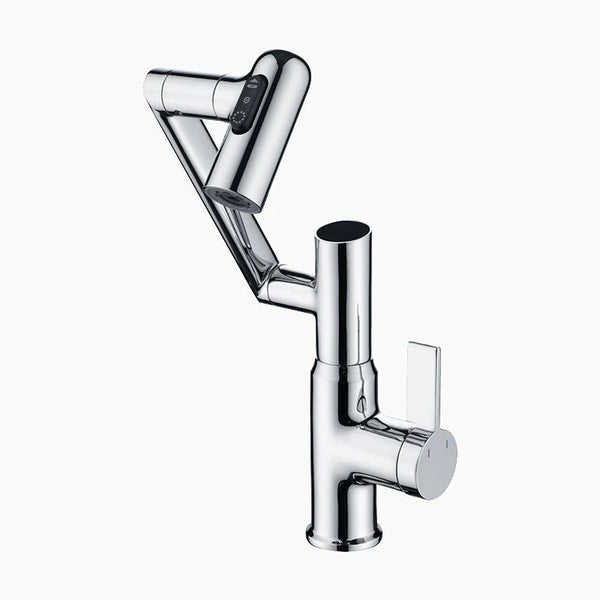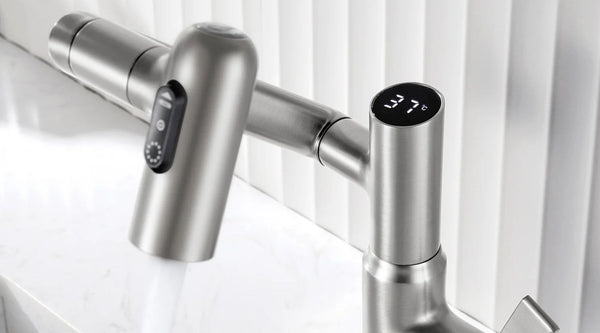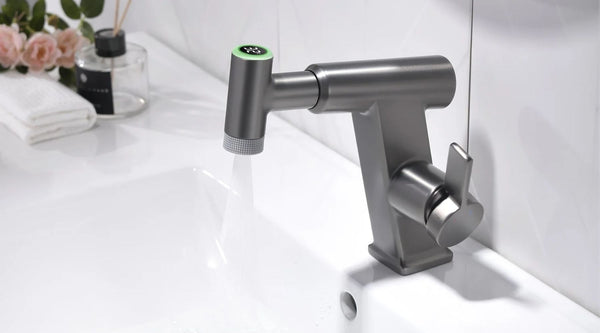Tips for Maintaining the Finish on Your Bathroom Sink Faucet
Your bathroom sink faucet is not just a functional fixture but also a design element that adds style to your bathroom. To keep it looking its best and functioning properly, it's essential to maintain its finish. In this guide, we'll explore tips and techniques for preserving the finish on your bathroom sink faucet.
Different Types of Finishes
When it comes to bathroom sink faucets, there are various finishes available, each requiring specific maintenance. Let's delve into some common finishes:
Chrome Finish
Chrome finishes are popular for their shiny, reflective surface. They are relatively easy to clean but can show water spots and fingerprints more prominently.

Brushed Nickel Finish
Brushed nickel finishes have a matte appearance with subtle brush marks. They are durable and resistant to corrosion, but proper care is necessary to prevent scratching.

Brass Finish
Brass finishes offer a warm, timeless look to your bathroom. However, they require regular polishing to maintain their luster and prevent tarnishing.

Oil-Rubbed Bronze Finish
Oil-rubbed bronze finishes have a rich, dark tone with subtle copper undertones. They add a touch of elegance to any bathroom but are prone to water spots and may require special care to maintain.
Common Causes of Finish Deterioration
Understanding the factors that contribute to finish deterioration is crucial for effective maintenance. Let's explore some common culprits:
Hard Water Stains
Hard water contains minerals that can leave unsightly stains on your faucet's finish over time. These stains are not only unattractive but can also be challenging to remove.
Chemical Cleaners
Harsh chemical cleaners can strip away the protective layer of your faucet's finish, leaving it vulnerable to damage and deterioration.
Scratches and Abrasions
Everyday use, such as cleaning with abrasive sponges or bumping objects against the faucet, can cause scratches and abrasions that mar the finish's appearance.
Essential Maintenance Practices
To preserve the finish on your bathroom sink faucet, incorporate these essential maintenance practices into your routine:
Regular Cleaning
Clean your faucet regularly with a soft cloth and mild soap to remove dirt, grime, and water spots without damaging the finish.
Avoiding Harsh Cleaners
Steer clear of abrasive cleaners and harsh chemicals that can strip away the protective coating and damage the finish.
Gentle Handling
Handle your faucet with care to prevent scratches and abrasions. Avoid using abrasive materials or rough sponges during cleaning.
Drying After Use
After each use, dry your faucet with a soft cloth to prevent water spots and mineral buildup, especially in areas with hard water.
Professional Maintenance Services
In addition to DIY cleaning, consider professional maintenance services for thorough care:
Professional Cleaning
Professional cleaners have the expertise and tools to deep-clean your faucet's finish, removing stubborn stains and restoring its shine.
Refinishing Services
If your faucet's finish is severely damaged, refinishing services can help restore it to its original condition, extending its lifespan and aesthetic appeal.
Preventive Measures
To prevent finish deterioration and prolong your faucet's lifespan, consider these preventive measures:
Installing a Water Softener
A water softener can help reduce mineral buildup in your plumbing system, preventing unsightly stains on your faucet's finish.
Protective Coatings
Applying a protective coating to your faucet's finish can help shield it from scratches, abrasions, and chemical damage, prolonging its lifespan.
Using Soft Cloths
When cleaning your faucet, always use soft, non-abrasive cloths to avoid scratching the finish and maintain its pristine appearance.
Related: How to Clean and Maintain Your Bathroom Faucet?
Why LEFTON Single Hole Bathroom Sink Faucet is Easy to Maintain and Clean?
Built to last, the Lefton single hole bathroom sink faucet features ceramic disc valves that exceed industry longevity standards, ensuring a lifetime of durable performance. Say goodbye to leaks, drips, and constant maintenance – this faucet is engineered to withstand the rigors of daily use while maintaining its flawless functionality and aesthetic appeal.

Conclusion
Maintaining the finish on your bathroom sink faucet is essential for preserving its aesthetic appeal and functionality. By understanding the different types of finishes, common causes of deterioration, and essential maintenance practices, you can keep your faucet looking like new for years to come. Remember to incorporate gentle cleaning methods, avoid harsh chemicals, and consider professional maintenance services when needed. With proper care, your bathroom sink faucet will continue to enhance your bathroom's beauty and functionality.
FAQs
1. How often should I clean my bathroom sink faucet?
Regular cleaning is recommended, ideally once a week, to prevent dirt, grime, and water spots from accumulating on the finish.
2. Can I use vinegar to clean all types of finishes?
While vinegar is generally safe for most finishes, it's best to test it on a small, inconspicuous area first to ensure it doesn't cause any damage.
3. What should I do if my faucet's finish is already damaged?
If your faucet's finish is damaged, consider professional refinishing services to restore its appearance and protect it from further deterioration.




Оставить комментарий